Unlocking the Secrets of the Project Management Office: A Guide to Its Core Functions
- Jessica R.
- March 15, 2024
- Edited March 15, 2024
Table of Contents
In today’s fast-paced business environment, staying on top of projects is more crucial than ever. Enter the Project Management Office (PMO), your go-to team for ensuring projects run smoothly from start to finish. Think of the PMO as the backbone of project management, providing the structure, tools, and guidance needed to achieve project success. This post will dive deep into the heart of what makes a PMO tick, breaking down its key roles and how it adds value to an organization. With a professional yet easygoing tone, let’s unravel the mysteries of the PMO and discover how it can transform your project outcomes.
Setting the Stage: Understanding the PMO
The Project Management Office isn’t just another corporate buzzword; it’s a critical component of modern business strategy. This entity is tasked with overseeing project management standards and ensuring they are applied consistently across projects. But what does this mean in practice? Let’s break it down into digestible parts, making it easier to grasp the vast array of functions a PMO encompasses.
Governance: The Guiding Hand
First and foremost, the project management office plays a pivotal role in governance. This means it ensures projects align with the company’s goals and strategies. Through rigorous oversight, the PMO sets policies, standardizes processes, and keeps a watchful eye on project performance. It’s like having a wise mentor overseeing projects, ensuring they’re on the right path, and making adjustments as needed.
Planning: Laying the Groundwork
Another critical function of the PMO is planning. Before any project takes off, there’s a considerable amount of groundwork that needs to be laid. The PMO helps define the scope, set timelines, allocate resources, and establish benchmarks for success. This careful planning helps mitigate risks and sets a clear direction, ensuring everyone involved knows what needs to be achieved and by when.
Resource Management: Keeping the Engine Running
Managing resources effectively is where the project management office truly shines. It’s all about ensuring the right people, tools, and materials are available at the right time. By overseeing resource allocation, the PMO helps avoid bottlenecks and ensures projects are not only completed on time but also within budget. It’s a balancing act of matching project demands with available resources, ensuring the engine keeps running smoothly.
Quality Assurance: Upholding Standards
Quality assurance is another critical function of the PMO. This aspect focuses on maintaining high standards throughout the project lifecycle. The PMO implements quality control procedures to ensure deliverables meet or exceed expectations. Regular reviews and audits are part of this process, providing an opportunity for continuous improvement and ensuring the final product is of the highest quality.
Communication: The Bridge Between Teams
Effective communication is the glue that holds projects together, and the project management office is at the heart of this. The PMO facilitates communication between stakeholders, ensuring everyone is informed and engaged throughout the project. This includes regular updates, reports, and meetings to discuss progress, challenges, and solutions. By acting as the central hub of communication, the PMO keeps all parties aligned and moving in the same direction.
Risk Management: Navigating Uncertainty
Risk management is a crucial function of the PMO, involving the identification, analysis, and mitigation of potential risks that could impact project success. The PMO develops strategies to deal with uncertainties, ensuring projects are resilient and adaptable. By preparing for the unexpected, the PMO helps projects stay on track, even when faced with challenges.
Training and Development: Building Expertise
The project management office also plays a vital role in training and development. It’s responsible for upskilling project managers and team members, ensuring they have the knowledge and tools needed to succeed. From workshops to certification programs, the PMO fosters a culture of continuous learning, helping teams grow and adapt to new methodologies and technologies.
Measuring Success: The Art of Evaluation
Finally, the PMO is instrumental in measuring project success. Through key performance indicators (KPIs) and metrics, the PMO evaluates project outcomes, assesses efficiency, and determines whether objectives were met. This feedback loop is essential for learning from past projects and refining processes for future initiatives.
The PMO as a Catalyst for Success
The Project Management Office is far more than just an administrative function; it’s a catalyst for project success. The PMO ensures projects are executed effectively and aligned with organizational goals by overseeing governance, planning, resource management, quality assurance, communication, risk management, training and development, and measuring success. Its role cannot be understated in today’s dynamic business environment, where managing projects efficiently is key to staying competitive.
As we’ve explored, the PMO brings order to the chaos of project management, ensuring a structured approach that leads to consistent results. Whether it’s through meticulous planning, rigorous oversight, or fostering a culture of continuous improvement, the PMO is the linchpin that holds project management processes together. By unlocking the secrets of the Project Management Office, organizations can harness their full potential, leading to enhanced efficiency, better outcomes, and ultimately greater business success.

Jessica R.
Jessica is a seasoned GMP compliance consultant and technical writer specializing in pharmaceutical manufacturing, data integrity, and quality assurance. With over 12 years of experience working with global pharmaceutical firms, Jessica brings deep industry insights into FDA, EMA, and MHRA regulations.


